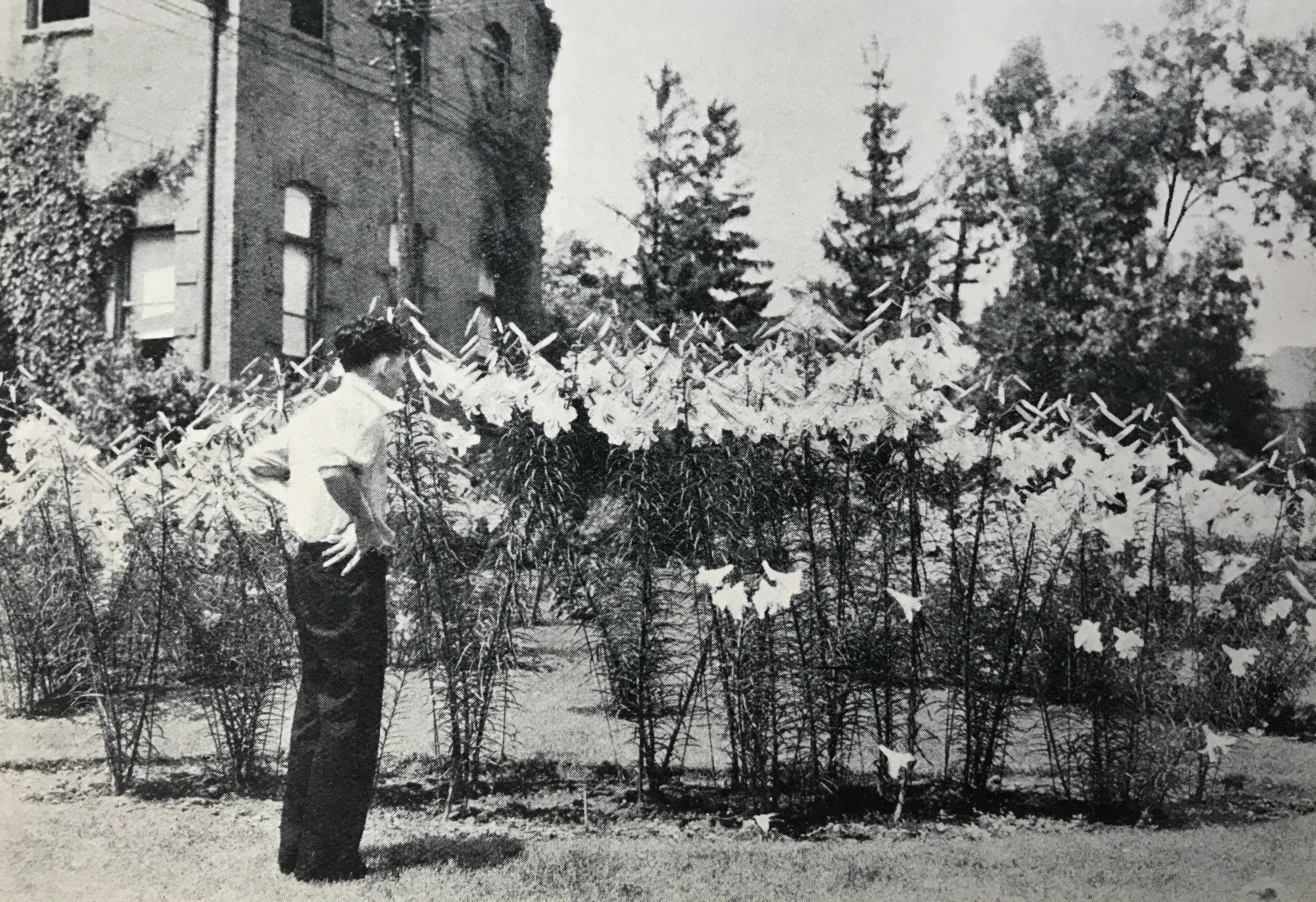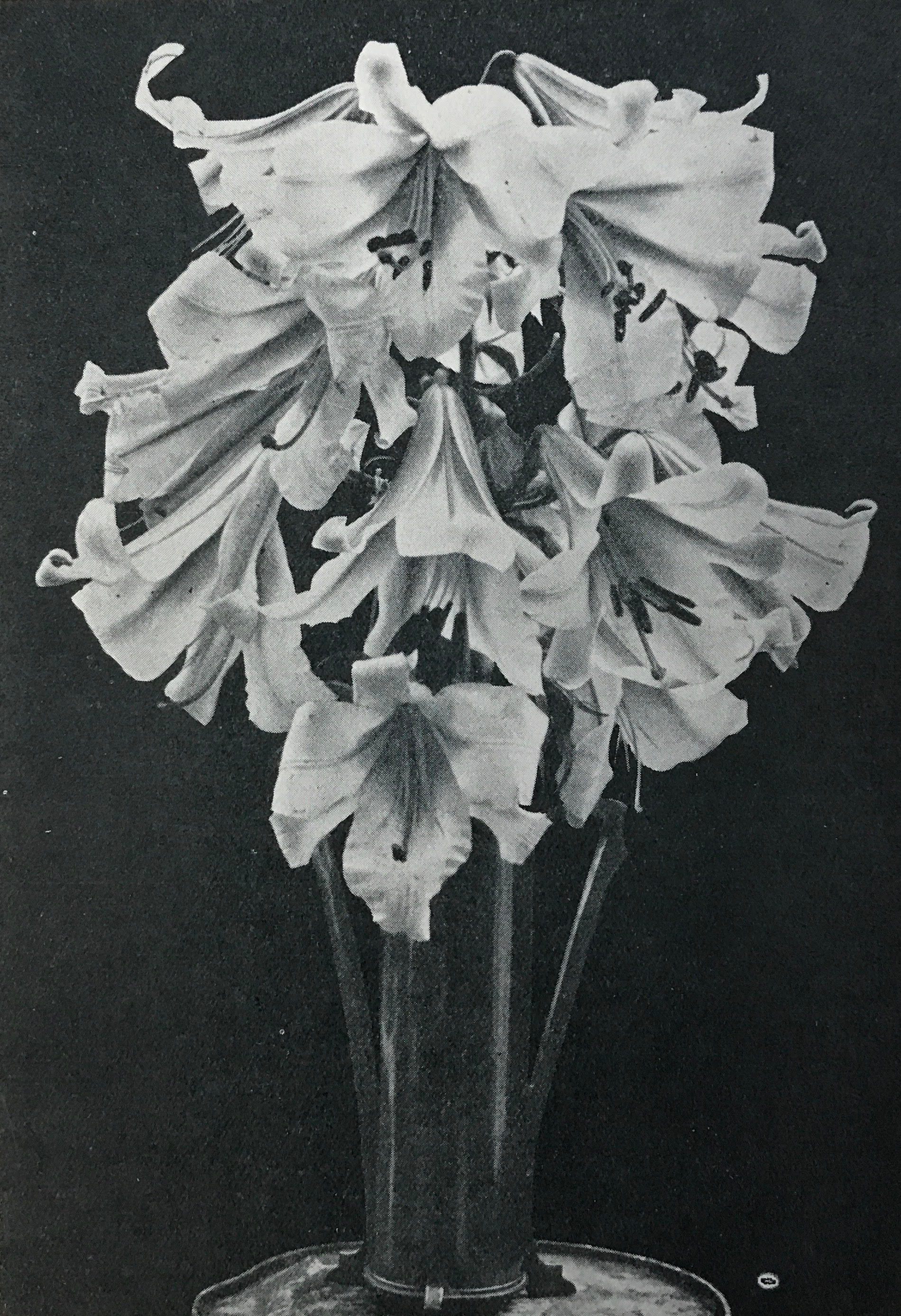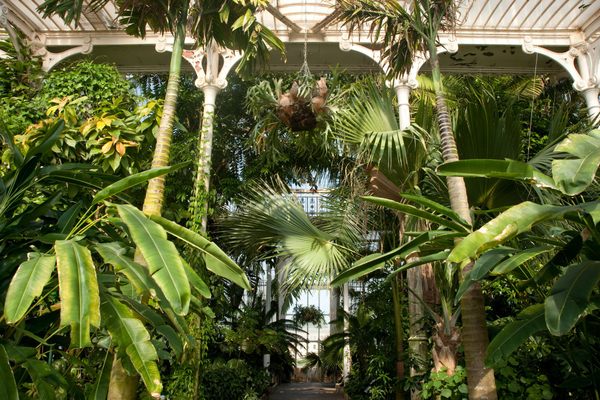The Hunt for a Missing Canadian Lily
The pioneering horticulturist Isabella Preston bred the George C. Creelman lily in 1916. At some point in the 1940s, it seems to have vanished.

In 1928, the plant breeder Isabella Preston took a moment between her duties at Ottawa’s Central Experimental Farm to reflect on her first big success. The Canadian Horticultural Council had asked her to write down a detailed description of a particular flowering plant, in order to answer a taxonomic question. So sometime after watering the columbines, or cross-pollinating the Siberian irises, she jotted down some words about the George C. Creelman lily—a big, white-flowered varietal she had bred 12 years earlier, and that had gone on to take the gardening world by storm.
Over 80 years later, in 2009, curator Alex Henderson took a break from his own day-to-day duties to rifle through the Isabella Preston archives at his workplace, the Royal Botanical Gardens in Ontario. “I found this handwritten description of this lily,” he says. “Written by her, in her own handwriting.” He pauses, and his voice gets hushed: “It was one of those nerd alert moments, where the hairs on the back of your neck stand on end.”
To Henderson, this wasn’t just esoterica. It was a piece of evidence in a mystery that spans centuries. At the time he found Preston’s description, Henderson had been searching for the George C. Creelman lily for about two years; by now, he’s been on the hunt for a full decade. To Henderson and other experts, the vanished lily is a vital part of Canada’s horticultural history. Its creation marked “the first real attempt to introduce a lily that was acclimatized to the Canadian climate,” he says. It is also, as an early example of Preston’s hybridization, a kind of lost masterwork—the equivalent of a missing Bach cantata, or a stolen Blue Period Picasso.

Canada is a tough place for your garden-variety lily. Up until the early 1900s, plant-lovers there had to make do with flowers bred for gardens in the United States and Europe, which tend to be suited to more temperate climates. Although much brainpower had been put toward making fruits, vegetables, and grains suitable for northern climes, less utilitarian plants hadn’t yet been given that same treatment. As the archivist Edwinna von Baeyer explains in her 1987 article “The Horticultural Odyssey of Isabella Preston,” in the years after World War I, horticulturists found that of the decorative plants being imported from Europe and America, “perhaps 50%… [were] not suitable for Canada.”
Into this void sailed Preston. Herself a transplant to Canada—she and her sister immigrated from England after their mother’s death—Preston always knew she wanted to work with plants. She described herself as “born with green fingers,” and was known to remark that all of her earliest memories were vegetable-related. Undaunted by the lack of women in such fields (“If you have to do something agricultural, why not take up poultry?” one acquaintance asked her) she enrolled in the Department of Horticulture at Ontario Agricultural College as soon as she arrived in the country, in 1912.
She pursued her studies with quiet vigor: over the course of her time at the college, she later wrote, she eventually read “all the books in the library.” After a year of classes, she switched to a self-study course, and began working full-time in the greenhouses. There, within a few years, she had started growing hundreds of lily bulbs for her own experiments.

In 1916, these experiments bore their first significant result: the George C. Creelman lily. Preston had crossed two cultivars from southern China, the first a particularly vigorous and hardy plant, called Lilium regale, and the second a large-flowered, fragrant one called L. sargentiate. The result was “stronger-growing and later-blooming than either parent,” writes von Baeyer. It grew about 6 feet tall, and its flowers were white and sweet-smelling, with yellow throats and pink speckles. She named it after the president of the Agricultural College, George C. Creelman.
When, after four years of tweaking, the Creelman lily was released to the public, it was an immediate and lasting hit. Breeders used it to make more hybrids, and the Royal Horticultural Society granted it an “Award of Merit” in 1934. The Creelman lily moved hobbyists to histrionics (“it is difficult to speak with restrained enthusiasm” about it, one wrote), and experts to gestures of respect: upon seeing an early specimen in bloom at the Ontario Agricultural College, one horticulture professor wrote that he “felt like taking off [his] hat.” As Henderson later found, it ended up in collections as far afield as Europe and Australia, a local plant made good.
And then, at some point in the 1940s, it seems to have vanished, Henderson says. His own quest started in 2007, with another handwritten clue: a cocktail napkin, scrawled with the phrase “George C. Creelman lily” and given to him by a colleague who had run into Creelman’s grandson at a bar. As the curator for the Royal Botanical Gardens, Henderson is used to tracking down obscure plants. He was also passingly familiar with the lily, whose reputation for beauty and vigor has endured, and he figured it shouldn’t be too hard to dig up.

“We didn’t have it, but I went into our plant records, and we used to have it,” he says. When local nurseries also lacked any living specimens, he went farther afield—“around Canada, and then Europe, and Australia,” he says. “All these places used to have it, and then didn’t. I realized then that this was a very strange story.”
Henderson’s first big lead came a couple of years after the hunt started, from a colleague at the former Ontario Agricultural College, now called the University of Guelph. “I happened to tell him the story,” he says, “and at the end of it he goes, ‘I’ve got that.’” The friend sent over a few bulbs, and Henderson waited impatiently for them to grow and flower. When they did, he set up a kind of plant-forensics room inside the Royal Botanical Gardens. “I got two botanists that work here, and I literally locked them in the room with the handwritten description and the lily flowers, so they could try to compare and contrast,” he says. “I was pacing up and down the corridor for two hours waiting for the results.”
When said results came, they were inconclusive. “They said, ‘You know what, it’s really close—but there’s just enough doubt in our minds,’” he says. So Henderson went back into the archives, where he began to piece together what he calls a “CSI-type” story of mistaken identities and genetic mayhem.
It turns out that in the years after the Creelman lily made it big, breeders began to notice small differences between individual plants, genetic variations that stemmed from the original crossbreeding. The Agricultural College’s strict naming rules meant that only one of these varieties could be considered the official George C. Creelman lily, and asked Preston to decide which one it would be. (Henderson thinks that the bulbs he got belonged to one of the inferior offshoots, which would explain the botanists’ diagnosis of close-but-not-quite.) “She claimed that the true varietal was a bulb that was owned by a man named Robert Patterson,” a commercial breeder, Henderson says. “But nobody knows who this guy was. The trail goes cold.”

At this point, Henderson isn’t quite sure how to heat it up again. So far, his lily-sleuthing has largely had to take place in spare moments, in between larger projects. “I can’t dedicated my full-time job to finding one plant for ten years—I’d get fired, right?” he says, a bit wistfully. He sees his quest as a mix between Jurassic Park and art appreciation: “You’re bringing something back that used to be around, and is no longer here,” he says. “It’s also no different than [looking for] a painting or a photograph or a work of art—it’s about that higher meaning, how humanity values aesthetic beauty.”
The Creelman lily was just the first of many successful Preston hybrids. By the end of her 30-year career, she was a giant of horticulture, with an international reputation. Von Baeyer relates a tale in which a Japanese admiral, brought to the United States on a diplomatic visit, asks to take a day trip to Canada to meet Preston. She created hundreds of new plants, many of which she named for the people and places of her adopted homeland: crabapples after Canadian lakes; roses after First Nations peoples; dark red lilies after the Horticultural Society’s stenographers. “It’s incredible, really, the amount of plants she bred,” says Henderson. “Even though she’s not here anymore, her spirit very strongly is.”
It’s because of that spirit that Henderson isn’t giving up. He recently happened to hear a woman talking about the Creelman lily on a gardening radio program; he has since connected with her, and gotten a few bulbs. In a year, when they bloom, he’ll lock the botanists in that room again and see what they say.
He’s trying not to get his hopes up—he suspects they are inferior varietals, like last time. But if they do turn out to be the real thing? “I’ll probably have a beer,” he says. “Sit on a balcony for a couple of days and just relax.”













Follow us on Twitter to get the latest on the world's hidden wonders.
Like us on Facebook to get the latest on the world's hidden wonders.
Follow us on Twitter Like us on Facebook